| Estimating the
Savings and Planning the Job |
|
Insulation Upgrade
Cost Saving Calculator |
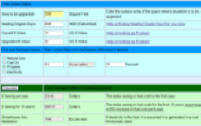 Calculate
how much money and greenhouse gas you would save with various insulation,
window, or window treatment upgrades. Calculate
how much money and greenhouse gas you would save with various insulation,
window, or window treatment upgrades. |
A Do-It-Yourself Guide To Energy
Star Home Sealing
Energy Star Home Sealing Guide...
(2 MB pdf)
Leaky ducts may lose
lose 15%
to 30% of your heated or cooled air ----
more on duct sealing NEW!
Don't use duct tape for sealing -- example ... |
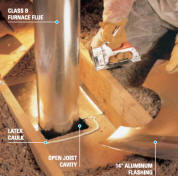 This
is a very well done guide to sealing up air leaks in your home. Lots
of good how-to pictures. This
is a very well done guide to sealing up air leaks in your home. Lots
of good how-to pictures.
A couple small add-ons I would make:
- Replacing older can lights so that you can insulate right over them is a
fairly easy DIY job -- it has the advantages of both reducing heat loss to
the attic and getting some heat gain from the can light to the room.
- The method they give for determining if you have enough insulation is
goofy. Instead, use the
Insulation Upgrade Calculator or one of the online insulation guides to
determine if your insulation is sufficient for your climate.
- For insulating over existing insulation, I like blown in cellulose.
Its easy, insulates very well, is resistant to air currents flowing through
it (see study below), and is easy on the planet. |
| Insulate and Weatherize
Bruce Harley |
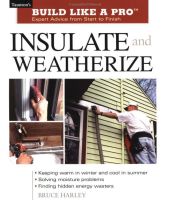 Very,
very good book on techniques for improving home
insulation, reducing air infiltration, and sealing ductwork. The
most complete and technically correct reference I have found. Very,
very good book on techniques for improving home
insulation, reducing air infiltration, and sealing ductwork. The
most complete and technically correct reference I have found. |
Home Remedies for Energy
Nosebleeds,
Bruce Harley, Fine Homebuilding, Issue 190
How to get
articles from Fine Homebuilding ...
|
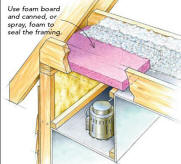 Fine
Homebuilding Magazine, Nov 2007, Issue 190. A good article by Bruce
Harley (author of the book just above) about finding and fixing particularly
bad energy wasting defects in your house. Fine
Homebuilding Magazine, Nov 2007, Issue 190. A good article by Bruce
Harley (author of the book just above) about finding and fixing particularly
bad energy wasting defects in your house.
These are the kinds of things that can raise your heat bill by 50% or more. |
Insulation Guides -- Building
a well insulated and Tight Shell for Your Home
The DOE-EERE Insulation Guide Series:
Insulation Overview
(pdf 2MB)
Insulating Ceilings/Attics (pdf 0.1MB)
Wall Framing
(pdf 0.8MB)
Insulating Walls (pdf 0.8MB)
Insulating Basements (pdf
0.2MB)
Insulating Crawl Spaces (pdf
0.2MB)
Insulating Slabs (pdf 0.2MB)
Window Selection
(pdf
0.5 MB)
Air Sealing (pdf 0.2MB)
Weather Barriers (pdf
0.2MB)
|
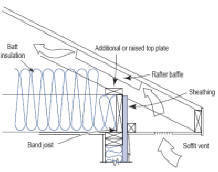 This
is a good and up-to-date series of guides from DOE-EERE site for building an
outer shell on your home that minimizes heat transfer. This
is a good and up-to-date series of guides from DOE-EERE site for building an
outer shell on your home that minimizes heat transfer.
I guess my one bit of advice would be to go a bit further than they
recommend for your climate, because experience shows that in a while (as
fuel prices climb) they will be recommending higher levels.
Other DOE-EERE publications here:
www.eere.energy.gov/buildings/info/publications.html |
| Urban Options --
UrbanOptions.org
http://www.urbanoptions.org/ ... |
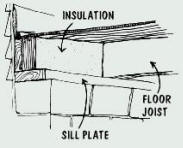 A
very good guides for decreasing air infiltration and improving
insulation. Well written and detailed. A
very good guides for decreasing air infiltration and improving
insulation. Well written and detailed.Plus a nice energy saving
check list for the most important items. |
| Insulating the
Attic |
|
<have this kind of intro section for each area .> Insulating the attic is
often a cheap and relatively easy DIY job that can have a very good payback.
There are some things that you will want to take care of at the same
time, like sealing up air infiltrations areas before you cover them with a
foot of insulation -- so a little planning is important.
An overview on what kind of approaches are available, how to estimate the
dollar saving, and how to plan the job...
|
|
Insulation Fact
Sheet (pdf) Fairbanks University Cooperative
Extension Service
|
A very good table providing information on all the common (and
not so common) types of insulation. R values, application suitability,
pro/con, max service temperature, ...
Very Useful, and, as far as I can see, unbiased (which is hard to find in
insulation info on the Internet). |
Insulating Your Old House,
(A wall insulation how-to)
Laren Corie,
ESSN Newsletter, Aug 2005
http://www.rebelwolf.com/essn/ESSN-Aug2005.pdf
|
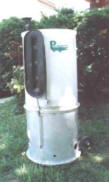 This
is a good article by Laren Corie in the Aug 2005 issue of the ESSN
Newsletter. This
is a good article by Laren Corie in the Aug 2005 issue of the ESSN
Newsletter.
It describes in detail how to insulate existing walls with cellulose
insulation.
The ESSN news letter, while not published anymore has some very good
articles in its online archive -- all free downloads.
http://www.rebelwolf.com/essn.html |
| Insulating the
Walls |
|
Insulating Existing Walls with Blown In
Insulation
Gary
|
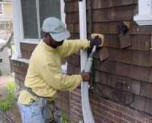 Some
collected information on how-to blow insulation into your existing walls. Some
collected information on how-to blow insulation into your existing walls. |
Advanced Air Sealing,
Oikos
http://www.oikos.com/library/airsealing/index.html
|
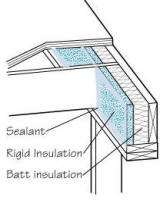 This
is quite a detailed and helpful guide on how to seal various joints and
penetrations. This
is quite a detailed and helpful guide on how to seal various joints and
penetrations.Some of these techniques can only be used during
construction, but some can be used on an existing house.
|
|
Home Energy Checklist From the Energy and Environmental Building
Association
http://www.eeba.org/resources/publications/hec/index.html
|
 Good
checklist of steps to take to reduce energy consumption in your house or
apartment. The "Myths" are almost as useful as the checklist items. Good
checklist of steps to take to reduce energy consumption in your house or
apartment. The "Myths" are almost as useful as the checklist items. |
|
Home Energy Projects
http://www.southface.org
|
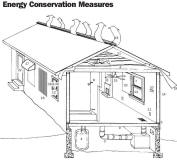 Home
Energy Projects -- Good, detailed guide on DIY energy conservation projects.
Written for Alabama, but many projects are good for anywhere. Home
Energy Projects -- Good, detailed guide on DIY energy conservation projects.
Written for Alabama, but many projects are good for anywhere." An Energy
Conservation Guide for Do-It-Yourselfers - 1.3mb pdf file. This book was
created for the state of Alabama with information that applies throughout
the southeast U.S. Home Energy Projects contains 86-pages and outlines 25
energy conservation projects, in order of priority, that can be performed by
do-it-yourselfers. Contains how-to instructions" |
|
All About Insulation
DanChiras
Mother Earth News
http://www.motherearthnews.com |
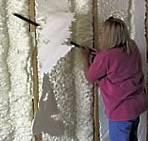 Mother
Earth News Article, Issue 194 Mother
Earth News Article, Issue 194Good rundown on the various types of
insulation available and their insulating, health, and environmental
characteristics. |
Spray Foam -- What Do You Really Know?,
Bob Yagid, Fine Homebuilding, June 2009
How to get
articles from Fine Homebuilding ... |
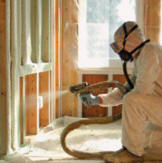 A
Fine Homebuilding article explaining the two type of spray foam insulation. A
Fine Homebuilding article explaining the two type of spray foam insulation. |
|
Save Energy and Money Now
Mother Earth News
http://www.motherearthnews.com |
Mother Earth News Article, Issue
188 Article outlines a number of practical steps to reduce your homes
energy consumption.
|
|
Are You Insulated
Edward Harland
Mother Earth News
www.motherearthnews.com |
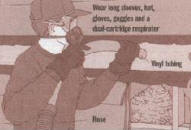 Mother
Earth News Article, Issue 153 Mother
Earth News Article, Issue 153
Pretty good article on insulating existing houses.
Good for a starter, but get the Harley book before you tackle the actual
project. |
|
Air Sealing From Southface at: www.Southface.org
Air Sealing Guide (139K pdf) |
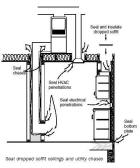 Good,
detailed guide on sealing houses to reduce air infiltration. Good,
detailed guide on sealing houses to reduce air infiltration.From the
Southface website -- other good material on this site. |
|
Operation Caulk -- Air Sealing Procedure for DC Habitat For Humanity
Duplex Houses Operation Caulk (200K pdf)
|
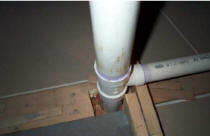 A
good and detailed guide on sealing to reduce air infiltration. A
good and detailed guide on sealing to reduce air infiltration.While the
guide is intended for new construction, some of the steps can be taken on an
existing house.
From:
http://www.greenhome.org/index.htm |
Attic Insulation Upgrade,
Mike Guertin, Fine Homebuilding, January 2009
How to get
articles from Fine Homebuilding ... |
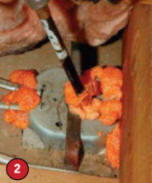 A
good article from Fine Homebuilding on adding insulation to the attic.
Lots of emphasis and detail on sealing before insulation, which is very
important -- careful sealing of air leaks may save more energy than the
insulation. A
good article from Fine Homebuilding on adding insulation to the attic.
Lots of emphasis and detail on sealing before insulation, which is very
important -- careful sealing of air leaks may save more energy than the
insulation. |
Airtight Attic Access,
Mike Guertin, Fine Homebuilding, July 2002 issue 148
How to get
articles from Fine Homebuilding ... |
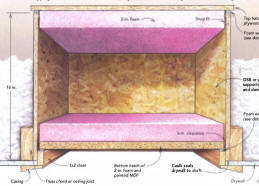 Fine
Homebuilding article shows a design for a double door access into the attic. Fine
Homebuilding article shows a design for a double door access into the attic.
Attic access hatches can be a HUGE large heat loss -- they ae often poorly
insulated and very leaky. This is a simple way to make sure yours is
not. |
Attic Venting, Attic Moisture and Ice Dams,
Canada Mortgage and Housing Corporation
www.cmhc-schl.gc.ca
|
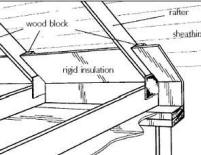 Good
fact sheet on what to do about wet attics and ice dams. Good
fact sheet on what to do about wet attics and ice dams. |
|
Radiant Barriers From Southface at southface.org
Radiant Barrier Guide (21K pdf) |
 Good
guide on how radiant barriers work, what to expect in the way of savings,
and how to install. Good
guide on how radiant barriers work, what to expect in the way of savings,
and how to install.Other good materials on the Southface website. |
How to Install Radiant Barrier Foil Insulation,
AtticFoil.com
http://www.atticfoil.com/foilinstallpics.htm
|
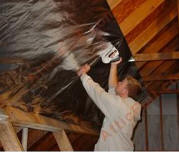 This
is a detailed and well written set of instructions on how to install a
radiant barrier. This
is a detailed and well written set of instructions on how to install a
radiant barrier.
This same outfit sells a "heavyweight" aluminum foil material for about 12
cents a sf. |
|
Blower Door Testing From the Southface.org website
Blower Door Test Guide (50K pdf) |
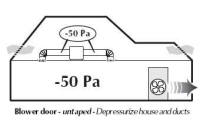 Good
guide on how blower door testing and duct blast testing can be used to test
for the level of air infiltration your house if experiencing. Good
guide on how blower door testing and duct blast testing can be used to test
for the level of air infiltration your house if experiencing. |
|
DOE Insulation Fact Sheet
www.ornl.gov/sci/roofs+walls/insulation/ins_01.html
|
Advice on where to insulate, what
to insulate with, and installation advice. Recommendations on insulation
levels that are dependant on climate and construction type. |
|
Crawl Space Insulation
http://www.advancedenergy.org
|
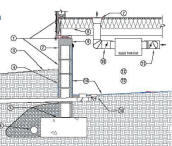 Closed
(unvented) crawl spaces can reduce heat loss, but have to be done correctly.
This site has lots of detailed information on how to decide on whether to
close your crawl space, and how to do it. Closed
(unvented) crawl spaces can reduce heat loss, but have to be done correctly.
This site has lots of detailed information on how to decide on whether to
close your crawl space, and how to do it. |
|
Filling A Floor With Bat Insulation Energy Source Builder
Newsletter, April 1995
http://www.oikos.com/esb/38/floorinsulation.html |
 How
to add insulation under your floor. Uninsulated floor can be a
major source of heat loss. How
to add insulation under your floor. Uninsulated floor can be a
major source of heat loss. |
|
Sources of Air Infiltration Energy Source Builder #45, June 1996,
http://www.oikos.com/esb/45/airleakage.html
|
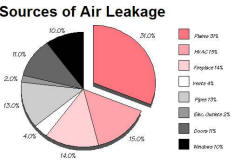 Tells
you where the cold air is coming from. Tells
you where the cold air is coming from. |
|
Retrofitting Insulation to Existing Homes
Retrofit Insulation in Existing
Wooden Walls (pdf)
Retrofit Insulation in Wood
Roofs (pdf)
Retrofit Insulation in Concrete
and Masonry Walls (pdf)
Alaska Building Research Series HCM-01552,3, and 4 |
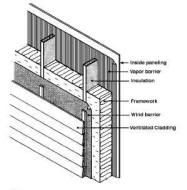
This series of three papers shows some techniques for retrofitting
insulation to existing walls, roofs, and concrete/masonry walls.
Good construction details.
These are not the only ways to retrofit insulation to walls, and may not
be appropriate for all climates -- but, may be perfect for some situations. |
|
Mooney Wall
|
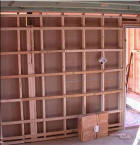 A
way to retrofit a high R value, low thermal bridging, and high infiltration
resistance wall. A
way to retrofit a high R value, low thermal bridging, and high infiltration
resistance wall.Mooney wall details
...
Another example of using the Mooney
wall ... |
|
Comparison of Fiberglass and Cellulose Insulation in Identical Test Homes
FG to Cellulose Compare (0.2MB pdf)
|
Heat Loss test for two small test homes, one insulated with fiberglass and
the other with Cellulose insulation.
Cellulose showed more resistance to infiltration and better R value than
fiberglass. |
|
Convection Losses in Loose Fill Fiberglass Insulation
http://www.homeenergy.org
More on this:
http://www.foam-tech.com/theory/rvaluedrift.htm
|
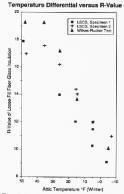 ORNL
test on loose fill Fiberglass attic insulation shows a loss in R value
of as much as 50% for cold outside temperatures. This loss is
due to convection currents within the FG insulation. Cellulose
insulation was also tested, and does not show this loss. ORNL
test on loose fill Fiberglass attic insulation shows a loss in R value
of as much as 50% for cold outside temperatures. This loss is
due to convection currents within the FG insulation. Cellulose
insulation was also tested, and does not show this loss. |
| Cheating -- The Insulation Industry's Dirty
Secret
www.homeenergy.org/...
|
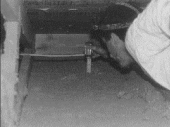 An
article from Home Energy magazine on cheating in the insulation industry. An
article from Home Energy magazine on cheating in the insulation industry.
Sad but important reading for everyone. This is a good reason to 1) do
it yourself, or 2) really understand what insulating is about, and make sure
the contractor knows that you will check on his/her work. |
| Insulation Under Concrete Slabs
www.blueridgecompany.com/ ... (pdf)
|
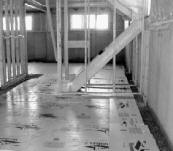 Good
article on under slab insulation for radiant heated floors. Good
article on under slab insulation for radiant heated floors.Compares three
types of insulation to no insulation.
Rigid foam insulations do well, but the bubble pack style of insulation
is worthless. |
|
Attic Tent
http://www.attictent.com/product.htm
|
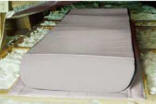 Pull
down attic stairways are notorious for air leaks. This $200 commercial
product seals up the attic stairway in what looks like an effective way. Pull
down attic stairways are notorious for air leaks. This $200 commercial
product seals up the attic stairway in what looks like an effective way.
It seems like a DIY version would also be possible. If you do a home
made one, please let
me know. Or, maybe you have an alternative way of sealing? |
|
DIY version of "Attic Tent" Details ...
|
 Here
is an easy to build means to cut heat loss through the pull down attic
stairway opening. Here
is an easy to build means to cut heat loss through the pull down attic
stairway opening.Details ... |
|
Preventing Stratification With High Ceilings Heat Harvester:
www.sunpipe.co.uk
|
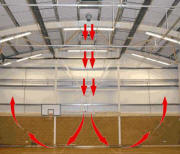 Homes
or buildings with high ceilings can result in lots of hot air near the
ceiling. The "Heat Harvester" (or a ceiling fan) can keep the air
mixed up and save some heat. Homes
or buildings with high ceilings can result in lots of hot air near the
ceiling. The "Heat Harvester" (or a ceiling fan) can keep the air
mixed up and save some heat.
Note that high ceilings don't always result in stratification, so check to
make sure you really need one of these
here
... |
See Also ...
<this section gives links to other
pages that apply -- best to point and not duplicate entries>

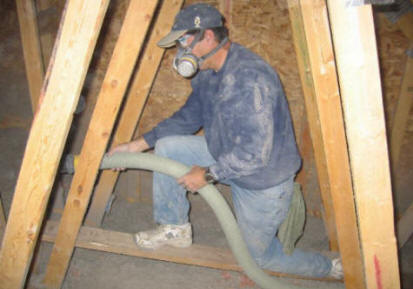
 Calculate
how much money and greenhouse gas you would save with various insulation,
window, or window treatment upgrades.
Calculate
how much money and greenhouse gas you would save with various insulation,
window, or window treatment upgrades. This
is a very well done guide to sealing up air leaks in your home. Lots
of good how-to pictures.
This
is a very well done guide to sealing up air leaks in your home. Lots
of good how-to pictures.  Very,
very good book on techniques for improving home
insulation, reducing air infiltration, and sealing ductwork. The
most complete and technically correct reference I have found.
Very,
very good book on techniques for improving home
insulation, reducing air infiltration, and sealing ductwork. The
most complete and technically correct reference I have found. Fine
Homebuilding Magazine, Nov 2007, Issue 190. A good article by Bruce
Harley (author of the book just above) about finding and fixing particularly
bad energy wasting defects in your house.
Fine
Homebuilding Magazine, Nov 2007, Issue 190. A good article by Bruce
Harley (author of the book just above) about finding and fixing particularly
bad energy wasting defects in your house. This
is a good and up-to-date series of guides from DOE-EERE site for building an
outer shell on your home that minimizes heat transfer.
This
is a good and up-to-date series of guides from DOE-EERE site for building an
outer shell on your home that minimizes heat transfer. A
very good guides for decreasing air infiltration and improving
insulation. Well written and detailed.
A
very good guides for decreasing air infiltration and improving
insulation. Well written and detailed. This
is a good article by Laren Corie in the Aug 2005 issue of the ESSN
Newsletter.
This
is a good article by Laren Corie in the Aug 2005 issue of the ESSN
Newsletter. Some
collected information on how-to blow insulation into your existing walls.
Some
collected information on how-to blow insulation into your existing walls. This
is quite a detailed and helpful guide on how to seal various joints and
penetrations.
This
is quite a detailed and helpful guide on how to seal various joints and
penetrations. Good
checklist of steps to take to reduce energy consumption in your house or
apartment. The "Myths" are almost as useful as the checklist items.
Good
checklist of steps to take to reduce energy consumption in your house or
apartment. The "Myths" are almost as useful as the checklist items.  Home
Energy Projects -- Good, detailed guide on DIY energy conservation projects.
Written for Alabama, but many projects are good for anywhere.
Home
Energy Projects -- Good, detailed guide on DIY energy conservation projects.
Written for Alabama, but many projects are good for anywhere. Mother
Earth News Article, Issue 194
Mother
Earth News Article, Issue 194 A
Fine Homebuilding article explaining the two type of spray foam insulation.
A
Fine Homebuilding article explaining the two type of spray foam insulation. Mother
Earth News Article, Issue 153
Mother
Earth News Article, Issue 153 Good,
detailed guide on sealing houses to reduce air infiltration.
Good,
detailed guide on sealing houses to reduce air infiltration. A
good and detailed guide on sealing to reduce air infiltration.
A
good and detailed guide on sealing to reduce air infiltration. A
good article from Fine Homebuilding on adding insulation to the attic.
Lots of emphasis and detail on sealing before insulation, which is very
important -- careful sealing of air leaks may save more energy than the
insulation.
A
good article from Fine Homebuilding on adding insulation to the attic.
Lots of emphasis and detail on sealing before insulation, which is very
important -- careful sealing of air leaks may save more energy than the
insulation. Fine
Homebuilding article shows a design for a double door access into the attic.
Fine
Homebuilding article shows a design for a double door access into the attic. Good
fact sheet on what to do about wet attics and ice dams.
Good
fact sheet on what to do about wet attics and ice dams. Good
guide on how radiant barriers work, what to expect in the way of savings,
and how to install.
Good
guide on how radiant barriers work, what to expect in the way of savings,
and how to install. This
is a detailed and well written set of instructions on how to install a
radiant barrier.
This
is a detailed and well written set of instructions on how to install a
radiant barrier. Good
guide on how blower door testing and duct blast testing can be used to test
for the level of air infiltration your house if experiencing.
Good
guide on how blower door testing and duct blast testing can be used to test
for the level of air infiltration your house if experiencing. Closed
(unvented) crawl spaces can reduce heat loss, but have to be done correctly.
This site has lots of detailed information on how to decide on whether to
close your crawl space, and how to do it.
Closed
(unvented) crawl spaces can reduce heat loss, but have to be done correctly.
This site has lots of detailed information on how to decide on whether to
close your crawl space, and how to do it. How
to add insulation under your floor. Uninsulated floor can be a
major source of heat loss.
How
to add insulation under your floor. Uninsulated floor can be a
major source of heat loss. Tells
you where the cold air is coming from.
Tells
you where the cold air is coming from.
 A
way to retrofit a high R value, low thermal bridging, and high infiltration
resistance wall.
A
way to retrofit a high R value, low thermal bridging, and high infiltration
resistance wall. ORNL
test on loose fill Fiberglass attic insulation shows a loss in R value
of as much as 50% for cold outside temperatures. This loss is
due to convection currents within the FG insulation. Cellulose
insulation was also tested, and does not show this loss.
ORNL
test on loose fill Fiberglass attic insulation shows a loss in R value
of as much as 50% for cold outside temperatures. This loss is
due to convection currents within the FG insulation. Cellulose
insulation was also tested, and does not show this loss. An
article from Home Energy magazine on cheating in the insulation industry.
An
article from Home Energy magazine on cheating in the insulation industry. Good
article on under slab insulation for radiant heated floors.
Good
article on under slab insulation for radiant heated floors. Pull
down attic stairways are notorious for air leaks. This $200 commercial
product seals up the attic stairway in what looks like an effective way.
Pull
down attic stairways are notorious for air leaks. This $200 commercial
product seals up the attic stairway in what looks like an effective way.
 Here
is an easy to build means to cut heat loss through the pull down attic
stairway opening.
Here
is an easy to build means to cut heat loss through the pull down attic
stairway opening. Homes
or buildings with high ceilings can result in lots of hot air near the
ceiling. The "Heat Harvester" (or a ceiling fan) can keep the air
mixed up and save some heat.
Homes
or buildings with high ceilings can result in lots of hot air near the
ceiling. The "Heat Harvester" (or a ceiling fan) can keep the air
mixed up and save some heat.